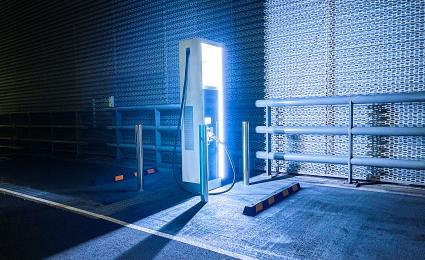After the energy price shock resulted in a subdued start to the year, the EV and EV charging markets sparked back into life in late 2022. Almost all countries featured in the fourth edition of Roland Berger’s EV Charging Index hit record-high scores, with several leaping up the rankings. Also covered in the edition: customer behavior is changing and OEM's strategy for EV charging infrastructure is showing regional differences.


Automotive suppliers steer through turbulent waters
By Felix Mogge
Felix Mogge, Partner and Global Head of Automotive Supplier Practice at Roland Berger, on how to navigate challenges in the automotive industry.
Pascal Nagl, Editor-in-Chief of Automobil Produktion, interviewed Felix Mogge, Global Head of Automotive Supplier Practice, for his trade magazine "Automobil-Produktion". The interview appeared in German in the July issue of the print magazine.

Interviewer: Mr. Mogge, the first half of 2023 is now behind us. What is your view of the automotive year so far?
Felix Mogge: All in all, the first half of this year was better, but it was still far from good. Vehicle sales were up in many markets. In Europe, for example, sales were about 20 percent higher in the first quarter than in the same period last year. But appearances can be deceiving: There are still many exceptional effects burdening the industry in 2023. If we look back at 2019, before the pandemic, we can see that today's market is still nowhere near the size it was back then. The reasons for this are clear: supply bottlenecks, inflation and a weak Chinese market. The Chinese market is currently presenting the biggest challenges for both OEMs and suppliers . Volumes are currently falling, and the growth curve is expected to be significantly flatter when the recovery does come. China is thus getting closer to the kind of dynamics seen in Western automotive markets.
Interviewer: Overall, automotive manufacturers focusing on high-margin models seem to have weathered the storm well. Is this a strategy that we will see continue?
Felix Mogge: OEMs have indeed been facing a special situation for the past two years. The lockdowns left them with a significant demand backlog, and at the same time, the supply was limited – for reasons that we all know. However, these effects have now normalized to some extent. Supply is gradually improving, and demand is decreasing, mainly due to the inflation of recent months. This puts the market back in familiar territory, and price competition will rise as volumes stagnate. Added to that is the fact that, right now, the high margins you mentioned can only be realized on vehicles with internal combustion engines. Electric models are still nowhere near as profitable. So we should treat the OEMs' profit expectations with caution. I don't expect the current situation to last.
"Supplier EBIT margins were already below five percent in 2022 and are expected to further fall this year. Their crisis continues – and they might soon have some company from the OEMs."
Interviewer: Still, some car manufacturers have already taken products out of their portfolio, with premium OEMs especially focusing on luxury and exiting the low-margin volume segment ...
Felix Mogge: That is indeed the case. But we are also talking about specific companies here. All OEMs are currently faced with the challenge of having a complex product portfolio. With more and more electric models joining an already large range of combustion engine vehicles in the coming years, it will become a necessity to streamline the portfolio. It's understandable that the low-margin segment may tend to be where the knife falls; but this strategy is only available to a small number of OEMs.
Interviewer: Let's turn to the suppliers, who are presumed to be the losers of recent years. In our last interview, you said that what we are facing is not an automotive industry crisis but a supplier crisis. Has your view changed?
Felix Mogge: No, suppliers are still navigating difficult waters. EBIT margins were already below five percent in 2022 and are expected to fall by up to one percentage point this year. Production volumes are still below pre-pandemic levels almost everywhere, resulting in significant overcapacity, reduced plant utilization, and pressure on operational efficiency. At the same time, discussions around OEMs sharing suppliers' costs have become more challenging than they were last year. Many of the compensations suppliers received from OEMs were one-time payments – meaning that suppliers need to renegotiate them this year. But they've often agreed to long-term price increases with their upstream suppliers. So the crisis continues for suppliers – and they might soon have company from the OEMs.
Interviewer: Strong words. Should we be concerned about some suppliers?
Felix Mogge: Not all of them, but certainly some. Smaller suppliers are particularly vulnerable, in my view. The past two years have shown that getting through the crisis relatively well requires a certain size and a certain financial stability. Besides the challenges I've already mentioned in the market, there are now issues such as sustainability and transparency in the supply chain. Altogether, this places maximum demands on suppliers and can lead to overwhelm. Of course, even large suppliers have their challenges, although they may be of a different kind.
Interviewer: Nonetheless, critical mass helps. For example, Hella and Faurecia have now formed the top-10 supplier Forvia. Do you think we will see more such mergers and acquisitions in the near future?
Felix Mogge: Certainly in some individual cases, but I don't expect a massive movement in that direction. Two-thirds of all acquisitions ultimately do not create significantly more value. If I were a supplier, I'd have to carefully consider what I actually wanted from an acquisition. If it's about acquiring technological expertise, it might be easier and more promising to enter into partnerships or collaborations than to embark on a complex integration process. In commodity segments, where mergers would generally make sense to restore the market and competition to a reasonable level, the figures often don't add up. I believe we will see consolidation in the supplier industry. But it will be more because OEMs will tend to concentrate on a few select suppliers when awarding contracts, pushing others out of the market.
"A collaborative partnership between OEMs and suppliers is going to be more necessary than ever in the future. The current challenges are creating a volatility and an uncertainty for the business that neither party can manage on their own."
Interviewer: Let's look at opportunities in the market. What niches could automotive suppliers occupy to be future-proof?
Felix Mogge: The problem is that there are essentially no niches that are really new anymore. There are still many growth areas in the automotive industry, but they are usually high in revenue and they therefore require significant investments. I'm thinking of key technologies such as batteries, electric powertrains, and driver assistance systems and electronics. All these areas still have great potential. However, only suppliers that are large, financially strong and have the technological expertise have a chance of gaining a relevant share of this market. Competition is extremely intense there, and price pressure is already significant, even in the early stages of innovation. Not only that, but the development of new technologies is almost always more complicated, more time consuming and more expensive than originally planned. It's very challenging to present a financially stable business case in an environment like that.
Interviewer: And quite a few car manufacturers are establishing their own capacities for components in the electric mobility sphere ...
Felix Mogge: Of course, some OEMs are improving their position in this area. Whether it's to master the technologies and understand their business impact, or whether they're doing it selectively to protect jobs. But I don't expect there to be significantly more insourcing in the coming years overall. Actually, it will probably decrease long term. Electric mobility is a suppliers' market, and that will remain the case. Generally speaking, suppliers are more effective at generating cost advantages and working towards standardization than any single OEM would be. But there's also no doubt that many mechanical component suppliers will find things harder and harder in an electrified world. Unlike with internal combustion engines, many of them will no longer do business directly with the OEMs – they'll be Tier-2 suppliers for the big system suppliers instead. We may well find that it's the big system suppliers who emerge as winners from the transformation to electric mobility.
Interviewer: Do OEMs have any option but to sustain a relationship of equals with the supplier industry in the face of the enormous transformation pressure?
Felix Mogge: From my perspective, a collaborative partnership between OEMs and suppliers is going to be more necessary than ever in the future. The current challenges are creating a volatility and an uncertainty for the business that neither party can manage on their own. OEMs need suppliers as a source of product innovations and to keep costs under control. Unfortunately, the way the inflation problems were handled last year just went to show, once again, that OEMs and suppliers are often still very far from being a partnership of equals ...
Sign up for our Roland Berger newsletter. You will get regular updates on newest publications across all our expertises.




